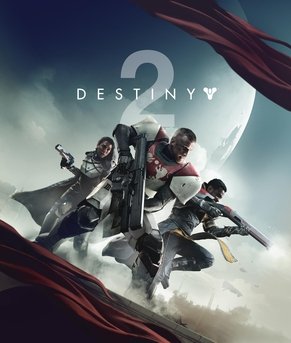Destiny 2
Developer: High Moon Studios Co-Dev with Bungie
Genre: Shared World; First-Person; Shooter; RPG
Engine: Bungie Proprietary Tech
Platforms: Playstation 4; Xbox One; Microsoft Windows
Released: September 2017
Gameplay Overview: The sequel to Bungie’s highly acclaimed first-person space opera shooter featuring a shared multiplayer world, online PvP and co-op, a new campaign, updates to the enemy factions, new destinations, and much more.
My Role: Senior Game Designer (generalist)
Duties: Level design and block out, encounter design, gameplay scripting, bug-fixing, polish for one strike
Responsibilities:
Principal design, blockout, and gameplay scripting for one strike:
I personally rate my work on Destiny 2 in the Pyramidion strike as my best level and encounter design work to date and it represents my accumulated learnings, experience, and ambition. It’s also a good example of a result arrived at through lengthy iteration. Given another chance today, that iteration time, although still necessary to a degree, would be greatly decreased.
Highlights for me were:
Discovering how to manifest the player fantasy. The core fantasy of the Pyramidion was essentially a sci-fi version of raiding an Egyptian pyramid, a place filled with traps and ancient secrets. I zeroed in on the idea of traps as a throughline for the strike and I prototyped several different kinds, including trap floors, crusher blocks, and what eventually shipped, laser arrays. The laser traps were controversial. Some people loved them, others hated them. I still get comments to this day from people who played the strike, one way or the other. Frankly, that’s how I knew I had a winner. It was something new and it was stirring up opinions.
Creating the throughlines. From laser traps to control circles, teleport gates, and windows that revealed what’s coming next, I worked hard to implement the encounter design triumvirate of “establish-reinforce-twist”. In other words, introduce key mechanics clearly from the start, use them again throughout the activity, and then apply interesting twists to them in order to keep the gameplay fresh and delight players in a way that doesn’t surprise or frustrate.
I also have to mention how proud I am of the core fundamentals in each of the encounter spaces. In terms of layout, cover, and objective placement, I used instinct, direct feedback, and constant iteration to dial in what worked best for the desired gameplay.
Strike: The Pyramidion
The Pyramidion was a strike that had an early iteration, but it needed a design overhaul. When I inherited it, most of the strike took place in the overworld and only the final steps took place inside the eponymous location. Even then, what took place inside the Pyramidion was very short.
My very first impression was that the most exciting fantasy for players would be actually the “dungeon delve” aspect of exploring the Pyramidion, so I immediately decided that the bulk of the strike should take place inside the Pyramidion instead.
The next challenge was figuring out how to build a strike that progressed through such a steep downward angle. The shell of the Pyramidion was a fixed metric, and also, one of the core player fantasies was the idea that players should constantly be descending. I attempted several iterations at this… most of them unsuccessful, but finally I arrived at the idea of discrete, lateral encounter locations that players would teleport between. This allowed me to satisfy the brief in multiple ways and also execute on core encounter design principles in each layout.
Finally, I’ll just highlight the collaboration I had with our gameplay engineer on the final boss, which was great. He was tasked with building out the boss combatant. We synced on the desire to make sure that players felt like the mechanics they learned earlier in the strike were still relevant at the end.
